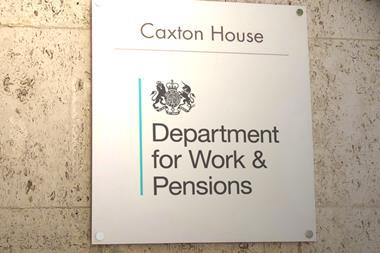While the UK government’s proposals to introduce a lifetime provider model may help tackle the growing number of small pension pots, it risks undermining the success of automatic enrolment, warned the Association of British Insurers (ABI).
In the Autumn Statement, the government has suggested introducing a lifetime provider model to tackle the growing number of small pension pots and engage more people in pension saving earlier on. It suggested this could be done through two methods: member choice and ‘pot for life’.
Member choice would give employees the right to ask their employer to pay their contributions into a pension pot of their choice, while a ‘pot for life’ would mean employees stay in the first pension scheme that they started saving into at the beginning of their career, unless they proactively opt to move.
To understand the real-world impact of the proposal, the ABI commissioned WPI Economics to poll employers on how they would respond to the reforms and to examine the impact of the proposals on different groups of savers.
Auto enrolment
Under automatic enrolment, charges mainly take the form of a very small percentage of the value of the pension pot. Because it is a percentage, this means that people with smaller pension pots benefit from lower charges than those with larger pots. Firms recoup the lower charges for small pots by charging more for larger pots – known as cross-subsidisation.
However, the association found that under member choice people would be encouraged to switch providers and firms – creating a retail or individualised pricing model, similar to banks. With this model, it said that pension firms are likely to seek to attract savers with bigger pots out of workplace pension schemes, leaving smaller pension pots behind.
This could lead to those with lower savings ending up with lower performing defaults, while also potentially being hit with increased charges as they would lose the cross-subsidies from larger pots.
The ABI said this could cause existing inequalities in pensions to deepen further, as it is more likely to impact those who are younger, on lower incomes, women, and people from ethnic minority backgrounds.
It added that the model may not support good outcomes for savers as a whole either. It pointed out that international evidence from Mexico shows that 40% of consumers switched to schemes that had both lower returns and higher fees after a member choice model was introduced.
Fundamental shift
At the moment, employers play a significant role in workplace defined contribution (DC) pension saving by selecting an appropriate pension that meets their employee’s needs. This role could significantly change under either of the proposed reforms.
With choice and switching providers being a key part of the government’s proposals, the onus would shift from employers securing the best deal for their employees, to individuals taking more control of their pension pot.
In a survey of over a thousand employers, 65% said it would be more difficult to assess the quality and value of a pension scheme for employees under the proposed reforms. And over half (57%) said they would take less interest in the quality of the scheme that they would choose for the employees who remain with their workplace provider.
The focus on switching poses a further challenge, as WPI Economics estimate that just 5-8% of savers will exercise choice in the initial years of the reforms, based on evidence from other markets.
The poll also showed that over half of employers (59%) would worry that their staff would make bad pensions decisions if they had to choose for themselves. Likewise, 62% of employers expressed concerns that the reforms would lead to their employees getting worse pension outcomes compared with just 10% who disagreed that there would be a negative impact.
Increased burden
There is also a concern that the reforms could create a significant admin burden on employers. The research showed that 63% of employers are worried the proposed reforms will increase their payroll provider costs, while 28% estimate that the reforms will require an additional five hours of staff time per month.

Modelling based on the findings suggests that this admin burden could cost £550m per year across the economy.
Yvonne Braun, director of long-term savings policy at the ABI, said that tackling the challenge of rapidly growing number of small, inactive, pension pots is vital so that it is easier for people to keep track of their money.
However, she pointed out that automatic enrolment through the workplace was primarily set up to help those who were not saving into a pension, many of whom were lower paid people, and warned that the industry must not reverse its success.
She said: “As this evidence shows, member choice would deliver few benefits, but risk throwing away the gains from auto-enrolment.”
She pointed out that pensions dashboards will bring key improvements in data quality which could help to make more efficient, cheaper pension transfer a universal reality.
“It is important that this work is completed, and the impact understood, before any further reforms are added to the mix,” Braun urged.
Read the digital edition of IPE’s latest magazine

























No comments yet